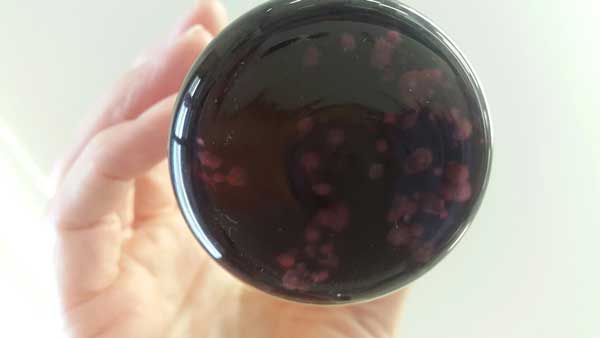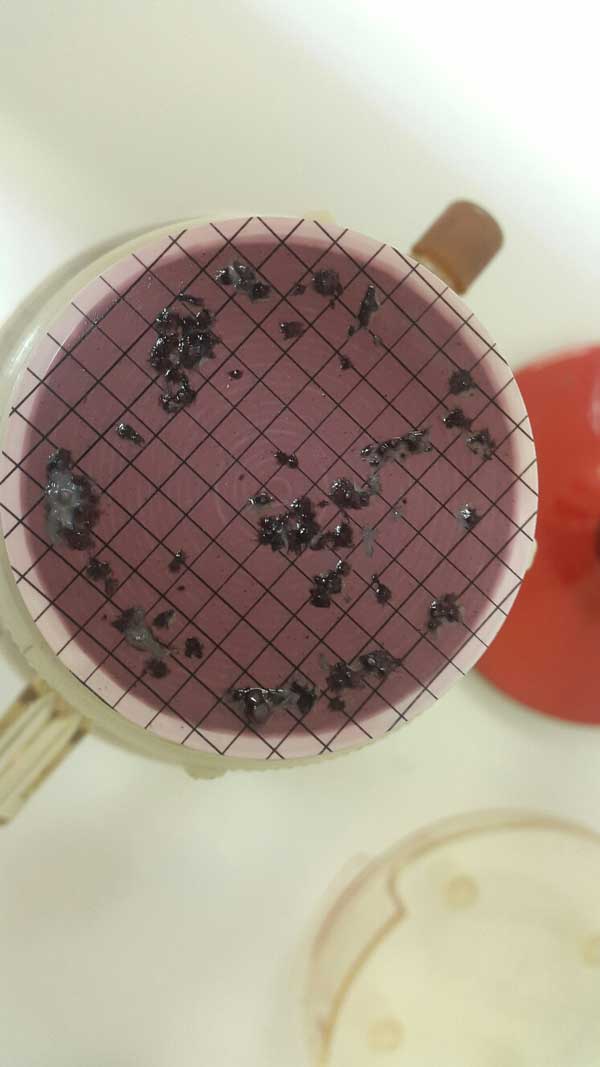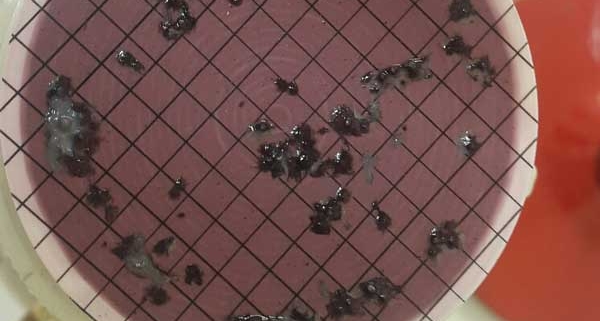A Whiff of Brett in a Barrel, Gelatinous Blobs in Wine and Caustic Gin – Testing Times – August 2017
Vintessential Laboratories are dedicated to helping our winery customers discover winemaking problems early, understand them, and then fix them. At our five laboratories around Australia we test hundreds of samples every week, so there’s hardly a problem we haven’t seen. Every month we bring you some of the recent problems that have been sent to us and explain how, working with our clients, we managed to help solve them.
A whiff of Brett in a barrel and the combination of tests used to help fix it
A customer reported detecting a very faint, unusual smell coming from one of their wine barrels. The customer was concerned that this could indicate a Brettanomyces contamination and was therefore interested in methods available to test for this.
The traditional method of microbial plating was discussed with the customer, however this method was discounted due to the time it takes to get a result (up to ten days) plus the potential false negatives that can be encountered with the presence of Viable But Non Culturable (VBNC) cells. VBNC Brettanomyces are cells that have entered an altered state, usually due to an external stressor, and although these cells are viable they will not grow on culture plates. However once the external environment changes, in this case changes in the wine, these cells can recover and go on to produce spoilage compounds.
The analysis of the spoilage compounds formed by Brettanomyces – 4 ethyl phenol and 4 ethyl guaiacol (4EP/4EG) by Gas Chromatography with Mass Spectrometry (GCMS) detection – was also discussed with the customer, however this method does not reveal whether the contaminant yeast is still present within the wine.
So a sample of wine was therefore analysed by another method we offer – Brettanomyces by Polymerase Chain Reaction (PCR). The PCR method is able to detect both viable and VBNC Brettanomyces cells because the target of analysis is the specific genetic material of the cells. We found a low, but positive PCR result in the wine which indicated the presence of Brettanomyces.
In order to determine the potential negative effects of this contamination, analysis of 4EP/4EG by GCMS was then recommended. Very low results were obtained for 4EP/4EG. Importantly, since most 4EP/4EG is produced once the Brettanomyces cell population reaches maximum density, early PCR detection helped to avoid the negative consequences of high levels of 4EP/4EG formation.
To remedy the situation the winemaker made sulfite additions to the wine which was then analysed again by PCR approximately 1 month later. Subsequent results by the 4EP/4EG tests revealed no significant levels of the Brett spoilage compounds within the wine. It appeared that there were no live Brettanomyces cells left in the barrel and no further 4EP/4EG produced.
This case highlights the use of the two different tests for Brettanomyces: PCR and 4EP/4EG, and shows how they can work together to effectively manage this nasty little bug.
Gelatinous blobs on the bottom of a bottle of 2 year old red wine
Another client came to one of our labs with a red wine that had been in bottle for 2 years.
The wine had large amounts of gelatinous, grey-brown blobs in the bottom of the bottle, although the taste was not affected. The deposit had only recently appeared in the last couple of months. Figure 1 shows the underneath of the bottle from below with the deposit in the bottom of the bottle.
Some of the details about the wine we gleaned were:
- the vintage was a wet one with some Botrytis
- the resulting wine was coarse filtered but not sterile filtered
- the fruit was mechanically harvested
- no use was made of calcium foliar sprays
- the wine was stored in a cool room at around 14 degrees C
Deposit analysis is not always easy as there can be a number of causes, and deposits can be from more than one cause. So some basic checks were done on the wine. The sulfite and pH were within normal limits, and the calcium level was below the limit of around 80 ppm, above which instability from calcium tartrates can be an issue. Cold stability testing was clear. Laccase and Gluconic acid tests were performed but showed little evidence of Botrytis infection. Plating the wine showed a very small amount of Lactobacillus bacteria.
So far nothing about the wine was definitive, so we focused on the deposit itself. It was a gelatinous precipitate and found to be soluble in methanol. Microscopic examination showed some brown crystalline, needle-like structures in the gel. Figure 2 shows the deposit on a filter paper after the wine had been filtered through the paper.
These investigations could happily send us performing all sorts of tests but we are mindful that the customer wants us to spend the least amount of time and money to find a remedy and assurance the problem can be fixed. In this case it appeared that we had found a case of a flavonol deposit.
Some modern viticultural practices such as machine harvesting can contribute to elevated levels of these compounds in wine. Quercetin dihydrate is one of the flavonol compounds which are natural components of grape skins and leaves. Quercetin glycosides are extracted from the grape skins during fermentation. The quercetin glycosides then hydrolyse in the acidic wine conditions to release the quercetin which is less soluble than the glycosides. The quercetin may then crystallise, incorporating some water molecules in the process and form a deposit and present like pale green or tan coloured needles, with long fibres in a gel-like matrix.
It was recommended to empty the bottles, strain the wine to remove the sediment, sterile filter and re-bottle.
Figure 1

Figure 2

Did I flush the tank before putting the gin in it?
A client cleaned his stainless steel tank with caustic solution (Sodium Hydroxide) and then couldn’t remember if he had neutralised the caustic with citric acid. Gin was then added to the tank and the distiller was worried that the gin could be affected by the caustic. The distiller wanted us to test to find out whether there was a level of sodium hydroxide that would not be suitable for human consumption.
We tested for sodium levels and pH in a sample of gin from that tank and then compared it with a sample of a similar batch of his gin from another tank. We found that the sodium levels and pH values for both samples were very similar.
Due to there being no significant difference between the two gin samples when analysing the sodium levels and pH, it was recommended that the distiller shouldn’t worry that there was a problematic sodium hydroxide level in the gin.
So a relaxing G&T was had by all that evening…
Greg Howell founded Vintessential Laboratories in 1995; he can be contacted by email on [email protected]/. More articles on related topics are available on the Vintessential website: www.vintessential.com.au/resources/articles/



